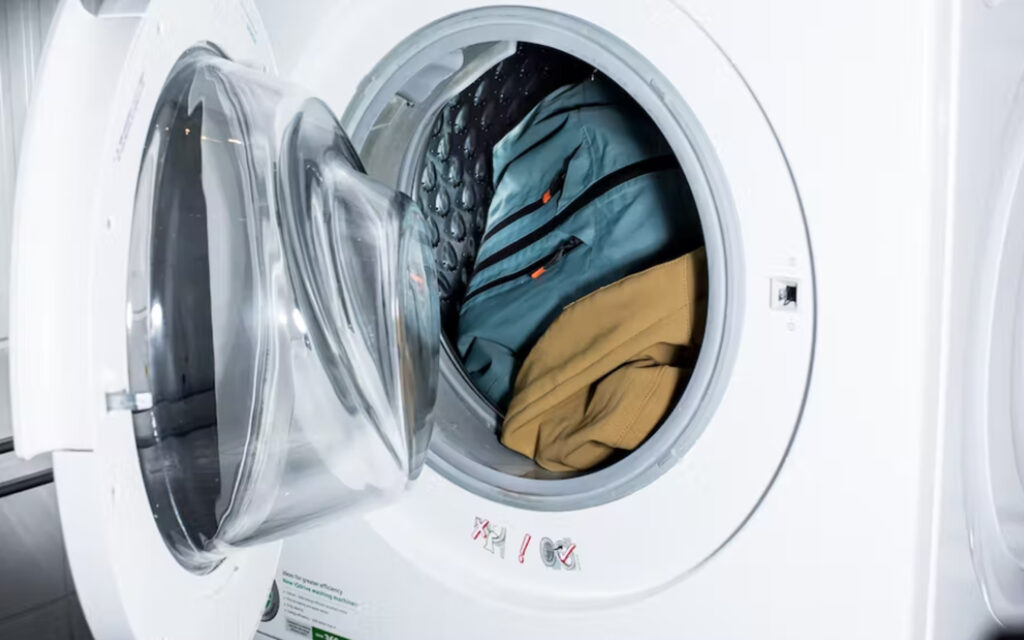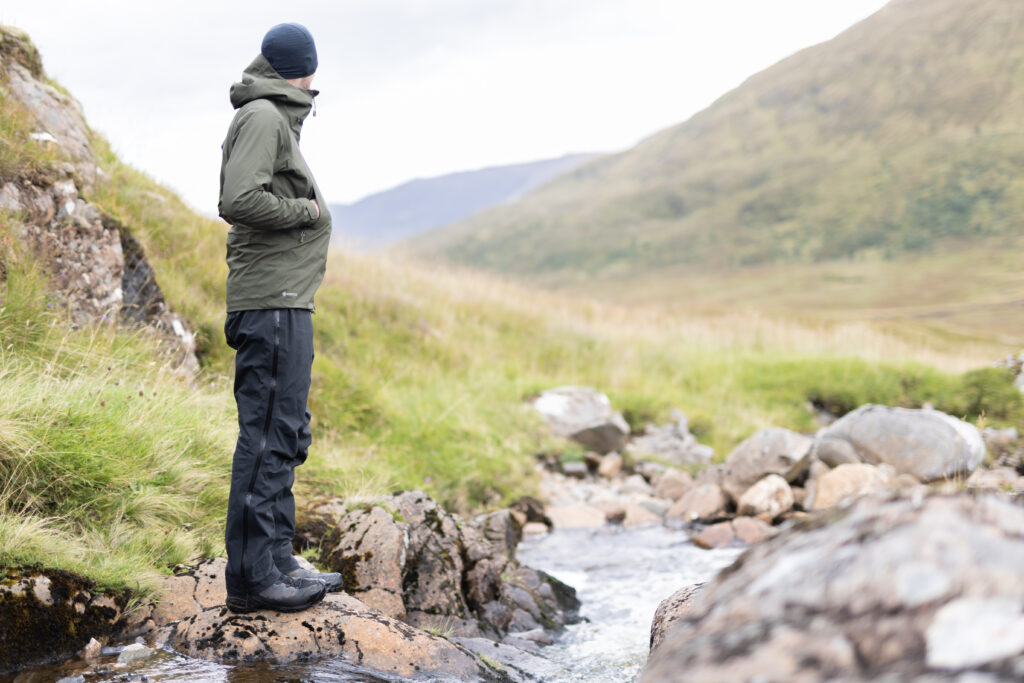Follow our step-by-step guide to ensure your outer shell works to its peak performance throughout its adventuring life.
…
Nothing beats being stood in the wettest conditions, with the rain hammering sideways yet staying completely dry, warm and comfortable. When a waterproof jacket performs its best, it is hard not to feel a little smug as you tell our beloved British weather… not today.
To ensure that your jacket performs to the highest standard however, you will need to ensure that it is properly taken care of. This isn’t sadly as simple as opting not to get too far into that blackberry bush. Just as your jacket looks out for you, you should look out for your jacket. Today on the TL Blog we’ll be giving you all the crucial steps to take to ensure the rain stays off for the full lifetime of your waterproof garment.
General good habits
Like for any product, here are some key habits to get into to ensure a good lifetime of the garment. Though these habits may not feel like much in the moment, over time they will certainly add up to preserving your jacket’s overall durability and performance.
- When not in use, store the jacket in a cool dry place, out of direct sunlight.
- If the jacket gets wet outdoors, don’t leave it in your pack. Be sure to let it dry thoroughly.
- Hanging the jacket from its hanging loop, as opposed to its hood will protect the membrane in the hood from wearing over time.
- When packing a jacket into a pack, roll it up into its hood as opposed to hastily stuffing it, treat it nicely.
- If the jacket gets dirt on it, clean it off once at home with a soft sponge and water.
- If dirt or sand gets onto the zip, use a toothbrush and water to remove it, once home.
- Try to avoid putting sharp objects such as car keys in the pockets while hiking. Put them in your pack instead.
- Periodically applying zip lubricant (like this one from Gear Aid) will ensure easy zip movement making it less likely to snag when zipping or unzipping.

Washing your waterproof
Grease and dirt from body sweat, mud or even sun-cream can all impede the breathability and overall waterproof performance of your waterproof clothing, making you feel damp and cold, even if the clothing isn’t actually leaking.
With the exception of insulated waterproof garments, the cleaning method for most non-insulated hard-shell garments is the same. They should ideally be washed using a specialist cleaning product such as Grangers Performance Wash or Nikwax Tech Wash. These are softer on the garment and are designed specifically for technical materials. Do not under any circumstances use fabric conditioner: it will likely cause lasting damage to the construction of the product, including its taped membranes.
Before you begin, clean any detergent out of your washing machine: if you use the powder drawer, give it a thorough clean, pouring hot water down it to remove any residue. Finally, run a short rinse cycle with the machine empty to clear any remaining detergent. Ensure all pockets are empty, drawcords under tension are released, velcro adjusters fastened and all zips including pocket zips and ventilation zips are done up fully.
Read the care label found inside the jacket.
Select the appropriate wash cycle on your machine – ideally, this should be a programme with a low to medium spin speed setting such as Delicates, Woollens or Handwash and with a temperature setting of 30°C or 40°C. Multiple garments can be washed at once but avoid washing heavily soiled garments together. Rinse extremely thoroughly (at least twice) before removing.
Garments can then be air-dried or tumble-dried as necessary (please check care label) or you can reproof a wet garment (more on this shortly). Even if air-dried, tumble-dry again on a low heat setting to help reactivate any DWR (Durable Water Repellency) treatment on the outer fabric. This can also be achieved by carefully ironing the outer fabric on a warm setting, ensuring to place a thin cloth between the garment and the iron. Do not allow the iron to come into contact with any zips, gaskets or logos.
Finally, all components such as cord locks should be checked and zips thoroughly lubed.

Reproofing your waterproof
A Durable Water Repellent (DWR) treatment on the outer fabric of your waterproof garment helps water to bead and run off. It is an important component of your jacket’s overall waterproof performance.
In use, you will notice the garment gradually begins to ‘wet-out’. This occurs when water is no longer beading and running off the surface but instead is being absorbed into the garment’s outer layer of fabric. It is usually most noticeable in high-wear areas such as the shoulders, knees, seat and around the waist. This is because the performance of any DWR is compromised by abrasion as well as dirt and oil contamination. Whilst this will not cause your jacket to leak, it can significantly reduce breathability leading to dampness.
DWR can be reactivated by washing and drying but if this has not had the desired effect it may be time to consider reproofing your garment as well. Reproofing is a process that should only be undertaken on a clean garment.
We recommend both Nikwax TX Direct or Grangers Clothing Repel.
Wash-in or Spray-on?
Honestly, it is up to you. The argument between the two is thoroughness and ease vs. adaptability. While using a wash-in is more likely to evenly apply the DWR, a Spray-on can be used to focus on more stress areas such as the shoulders and cuffs. A Spray-on will also only proof the outer, whereas the wash-in will proof both the inner and outer. There is an argument that proofing the inner will make the garment marginally less breathable.
To use a wash-in, after cleaning your jacket, pop it back in the washing machine before drying and carefully following the instructions on the side of the reproofer’s bottle. Choose a delicate spin cycle. All garments should be tumble dried to unlock the DWR’s true potential.
To use a spray-on, Hang the garment before drying or lay it out flat and apply the spray with at least 20cm between the jacket and spray-nozzle. Be sure to focus on high-stress areas that tend to wet out sooner. Again, we recommend a gentle tumble dry to give that DWR a boost.
…
There you have it! If you have any more questions, you can visit us in-store where our staff can talk you through the process and point you to the correct products.











